
Mosé
-
Posts
11 -
Joined
-
Last visited
Posts posted by Mosé
-
-
On 29/04/2014 at 4:34 AM, Ardworix said:
The Lusitanians is a very interesting option, not only for its undeniable condition most important Iberian nation as the aesthetics. For exemple, the monument will be the Lusitanian warrior:
Castro:
http://kadjalilas.files.wordpress.com/2008/11/0001castrostegraweb.jpgAlso, a number of interesting things about those kinds of sculptures:
actually, they are usually attributed to peoples further north than the Lusitanians (other peoples of the "castro culture" such as astures, cantabri or gallaeci), although obviously these peoples have similarities with the Lusitanians (and viceversa). Most of them have been attributed to the gallaeci (although they are also used as a source to study the astures and Cantabri).
An article about them: Vista de Las imágenes como un modo de acción: las estatuas de guerreros castreños (csic.es)
-
 1
1
-
-
On 19/01/2021 at 7:31 PM, Duileoga said:
WOW, impressive. It would be great to include with the Lusitanians other great peoples of the "Castro culture" such as the Astures, Gallaeci and Cantabri.
I have a source that could be useful in relation to the economy and architecture: https://core.ac.uk/download/pdf/236280042.pdf
-
 1
1
-
-
42 minutes ago, Genava55 said:
By the way you seem to know a bit the topic, plus you are fluent in Spanish (probably your mother tongue). If you are interested you can suggest some rework for the Iberian faction and some addition for a possible new faction.
Maybe you noticed, but the current Iberian faction is a bit messy from a historical point of view. It is mixing on purpose features and items from the Iberian sphere and the Celtiberian sphere, plus a couple of features from neighboring material culture and even a character/hero.
I really find amazing that 0 A.D. is portraying such lesser known culture like the Iberian, but I am also sad it is ending in a patch-work of multiples cultures without clearly explaining to the player the differences. The Iberian Peninsula is a fascinating region with a lot of diversity. I don't think 0 A.D. could fit several factions from the Iberian peninsula but a second one could be acceptable and desirable.
Personally I see three important cultural group (or supracultural group): the Lusitanian, the Celtiberian and the Iberian.
I don't know really how to reduce it to only two factions. I suggested several ideas but I am not sure any of them is convincing, even for me:
Yes, I'm spanish. It will be a pleasure to help in everything that is necessary, of course (that's why we are here). Thank you.
And yes, I really appreciate the effort because i know that the cultural "mess" is big in the pre-roman peninsula, but the faction could be improved. it is interesting what you suggest; I think it's a good idea to leave the Celtiberians and Iberians together (which would involve other "minor" peoples in their radius of influence such as the Basques and Turmogos) and create other faction with the lusitans and the groups of the north of the peninsula (Gallaeci, astures and cantabri). But of course there are many other possible solutions.
I also think that more than two factions would be too much, as well as very difficult to document.
-
 1
1
-
-
8 hours ago, Genava55 said:
Personally on the matter, I see the double-headed axe as a very unpractical weapon. There is no benefit at all to a second blade for the battlefield. It simply increases the weight for nothing, and it is contrary to the general process observed in ALL cultures using dedicated battle-axes, which is to reduce the weight of the axehead to increase the balance.
I totally agree with you on this. During my university studies I analyzed a lot of armament from the early middle ages; it is a different context, but similar observations can be made. For example, in these crhonologies there is even a clear difference between battle-axes and the ones used for wood. I doesn't take so much force to hurt people and a weapon must be manageable in relatively long periods of time.
9 hours ago, Genava55 said:This is a bit the issue with wargaming culture and reenactment. We want to see differences and uniqueness. History is much more boring in the academic sphere than it is in the popular media.
Yeah, totally true. But I never seen such a mistake (extreme misinterpretation of an archaeological source) in an article like this, redacted by two archaeologists with doctor's degree (there is always a first time for everything). At least we have discovered the truth behind it.
-
4 hours ago, Genava55 said:
A question, is this kind of axe found in archaeological context from Cantabria or Asturia? Because I have only seen simple axeheads found.
I only know that example, but yes, is from that context. Pisoraca is located in an area under the influence of various pre-roman groups (including the turmogi, the vaccei) but the sources and the archalogical studies evidence that there is a cantabrian presence. In this article from the repository of Dialnet (from the university of la Rioja) is very well synthesized the history of the settlement (specially in the first pages):
Pisoraca: Desde sus orígenes a los visigodos - Dialnet (unirioja.es)
About the axe, I only know one image; the one that is showed in the article "Los últimos hispanos frente a Roma" by Jesús Francisco Torres-Martínez and Eduardo Jose Labrador (appeared in the number 45 of Desperta Ferro). I am not sure if I can share a photo of the page made by me (due to copyright), I will contact the publisher and see what I can do and what not. But don't worry, it is not the only source. In the page 87 of the article "La arqueología de la Edad de Hierro de Cantabria: una breve síntesis" (from the book "Cántabros: origen de un pueblo") by Rafael Bolado del Castillo et al. this is explained:
"Of all the weapons, the most popularly known today is the double-edged axe, the bipenne with which Laro faced the Romans in the account of Silio Italicus. Interestingly, his fame is inversely proportional to its archaelogical documentation. Together with the well-known classic quotation, the evidences of its existence are reduced, again, to the iconography of the coins. of Carisio and a small specimen in my miniature, votive type, found in Herrera de Pisuerga (Palencia). On the contrary, axes are common single-edged, such as those of Las Rabas, Monte Bernorio or Caravia, related, due to their polyvalence, to both woodworking and warfare".
I have translated the paragraph myself. The original in spanish say this:
"De entre todas las armas, la más conocida a nivel popular hoy en día es el hacha de doble filo, la bipenne con la que Laro hizo frente a los romanos en el relato de Silio Itálico. Curiosamente, su fama es inversamente proporcional a su documentación arqueológica. Junto a la consabida cita clásica, las evidencias de su existencia se reducen, nuevamente, a la iconografía de las monedas de Carisio y a un pequeño ejemplar en miniatura, de tipo votivo, hallado en Herrera de Pisuerga (Palencia). Por el contrario, sí son habituales las hachas de un solo filo, como las de Las Rabas, Monte Bernorio o Caravia, relacionadas, por su polivalencia, tanto con el trabajo de la madera como con la guerra".
The original can be consulted here: (1) (PDF) La Arqueología de la Edad del Hierro en Cantabria: una breve síntesis. | Rafael Bolado del Castillo - Academia.edu
It is noticed that Rafael Bolado qualify the axe as a "miniature". So strange, if it is a miniature, we will probably haven't a bipennem axe, but a votive pendant or something like that (they appear quite frequently). The reconstruction of Pablo Outeiral is based on the works of Jesús Francisco-Torres Martínez and Eduardo José Peralta Labrador, if they have misinterpreted the sources, the good reputation of these specialists and the magazine is compromised. Very weird in the case of an academic article.
In the absence of more sources, I should doubt about the existence of this type of axe. Probably only the simplest ones (with only one face) are used with war purposes.
It seems that Desperta Ferro failed this time. My apologies.
-
 1
1
-
-
1 hour ago, Genava55 said:
Yes, as I say; it is a misconception. We don't know enough to catalog the helmet. In the case of the dagger, there are a lot of archaelogical material similar to the ones that this article analyzes (varied in the case of the pommels, but with many morphological similarities, specially if we talk about the scabbards):
-
On 04/03/2021 at 9:55 PM, Lion.Kanzen said:
@Mosé gracias.
Encantado de ayudar.
On 04/03/2021 at 9:58 PM, Genava55 said:The topic is nearly the same with early Gallo-Roman monuments where we can find masked helmets alongside Gallic stuff (but also Roman stuff):
Although it is really difficult at that time to assess if the representation are natives or Romans.
Actually this uprising brow is something you would observe on Italic and Hellenistic helmets.
Yeah, I have shown those two sources because trough them we can see the ambiguity of this kind of reliefs. In reality, the helmets "hispano-calcídicos" of the celtiberians could blend very well with those helmets: as the name "calcídico" suggests in spanish, they have a strong chalcidian influence, they could even be classified as a local "variant" of the chalcidian type (their similarities are evident).
BUT, of course, it is not the only suspect. The coin may be representing an italic or roman helmet, with or without a mask, who knows.
The fact of considering the representation as a local helmet (from the astures or the cantabri) comes from some studies that are based on the commemorative character of the coins. As these coins shown a roman victory, they have to represent the panoply of the vanquished (astures and cantabri).
http://4.bp.blogspot.com/-sUnDqo0h_RA/U-dKHO19CrI/AAAAAAAABvo/jqn2kdM4ABg/s1600/Monedas+Carisio+hachas.jpgimage taken from: Proyecto Mauranus: Casco, hacha y puñal: la panoplia de un jefe astur en una moneda de Carisio
These ideas mostly come from two different sides: a wrong belief (the wild idea that the romans intended to make an accurate representation of the armament) and the representation of a "singular" weapon (the double-bitted axe, not as singular as you might think).
Why is the axe not so unique ? Well, because it looks like the typical labrys (or bipennis if you prefer latin). BUT, again, there is more about this.
In the number 45 of the magazine Desperta ferro, "Las Guerras Astur-Cántabras" ("Astur-Cantabrian wars" in english) the historians Jesús Francisco Torres-Martínez and Eduardo José Peralta Labrador analyze this topic on their article "Los últimos hispanos frente a Roma"(in the page 20 to be exact). they quote a paragraph from the epic poem Punica by Silius Italicus:
"This was a Cantabrian, Larus by name, who could have inspired fear even unarmed; so gigantic was his frame. After the fashion of his nation he fought with a battle-axe; and, though he saw the ranks around him defeated and overthrown, yet, when all his countrymen were destroyed, he filled single-handed the places of the slain. If his foe stood face to face, Larus rejoiced to glut his rage by smiting him on the forehead; or, if he was forced to meet an enemy on his left hand, he whirled his weapon round and struck a sidelong blow. Or when a victorius foe attacked him from behind, he was not dismayed but could ply his axe in that direction" (Silius Italicus, Punica XVI, 46-69: Punica : Silius Italicus, Tiberius Catius : Free Download, Borrow, and Streaming : Internet Archive).
Furthermore, they compare the paragraph with our coin and an axe shard found in Pisoraca (Herrera de Pisuerga, Palencia) that seems to be a bipennem. The labrys (mainly with ritual uses) aren`t strange in the pre-Roman archaeological context of the Iberian Peninsula. It seems that the Astures and Cantabri could use axes (of different shapes) as a weapon, which was not so common in the Peninsula (but with simpler axes, not with the double faced ones)
The romans may have used the axe in the coin as a representation of the defeated Astures and Cantabri (they did something similar with the falcata and the iberians). The real confusion comes from including the helmet in this (the dagger is ambiguous too, and the elements can be mixed with roman ones; as you suggest, that is something relatively common).
-
 1
1
-
 1
1
-
-
On 08/01/2020 at 7:18 PM, Lion.Kanzen said:
https://elgrancapitan.org/foro/viewtopic.php?p=741977
Isn't real, pure fantasy romanticise of history. A romantic concept from the ancestors.
Is from XIX century illustration.
From:
"Album de la Infanteria Española : desde sus primitivos tiempos hasta el día (1861) - Soto, Serafín María de , Conde de Clonard, 1793-1862 "
Buenas a todos, desconozco si el tema de la moneda de Publio Carisio y el peculiar yelmo con facial está zanjado ya; pero bueno, me gustaría aportar algunas fuentes de información por si fuesen de utilidad.
En este artículo académico sobre numismática (especialmente sobre la ceca de Emérita Augusta) se relaciona (en la página 37) ese facial como algo eminentemente romano:
Emerita Augusta y sus imágenes monetales I - Dialnet (unirioja.es)
En el artículo del siguiente blog (llevado por dos arqueólogos), se ahonda más en el tema; explicando el verdadero origen de la moneda (es cierto que Publio Carisio era gobernador de la Lusitania, pero en realidad la moneda está relacionada con la toma de Lancia y la derrota de los últimos reductos de resistencia astur-cántabra en el contexto de esta conocida guerra; por lo tanto, la panoplia mostrada se asociaría más bien con estos; o bien con los vencedores, según lo planteado en el anterior artículo) y dando una hipótesis interpretativa diferente (lo relacionan con los cascos hispano-calcídicos, propios de los celtíberos):
Proyecto Mauranus: Casco, hacha y puñal: la panoplia de un jefe astur en una moneda de Carisio
Intentaré buscar más al respecto si fuese necesario, espero que sea de utilidad. Desgraciadamente, no he sido capaz de encontrar nada en inglés, sólo en español.
Un saludo.
-
 1
1
-
 1
1
-
-
2 hours ago, Genava55 said:
Strabo put the Astures in the same group with the Galicians and the Cantabrians, saying they have the same custom. Probably they are an intermediate step between both, an ancient Indo-European culture being Celtized by Celtiberian culture as well.
Yes, I agree with that. I just say that they should be taken into account just like the others (mainly because of its wide extension and relevance in astur-cantabrian wars).
-
On 17/01/2021 at 11:36 AM, Genava55 said:
This graphic seems very ilustrative; but, where are the Astures ? they are one of the most important archaelogical cultures in the north of the peninsula:
They even created their own breed of horses, called "Asturcón" in spanish:

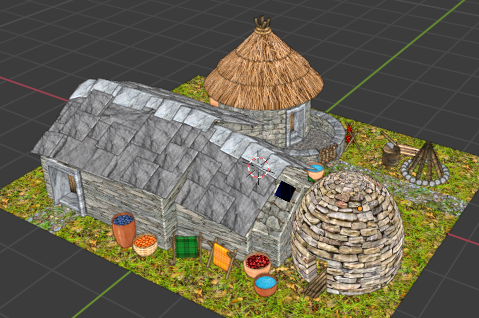
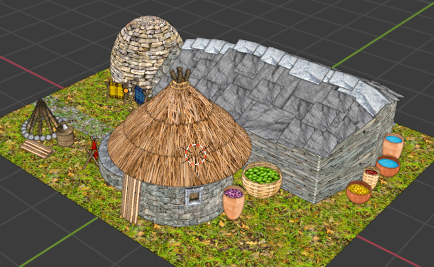
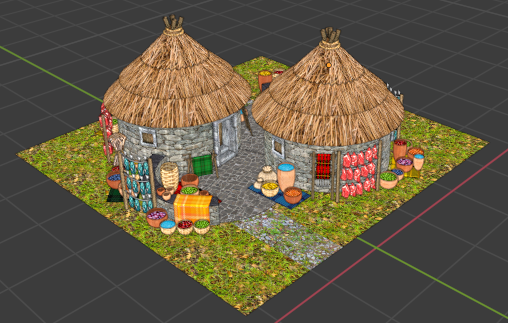
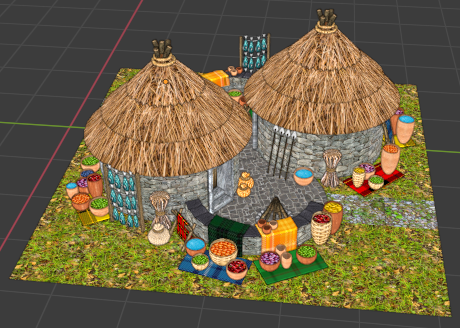



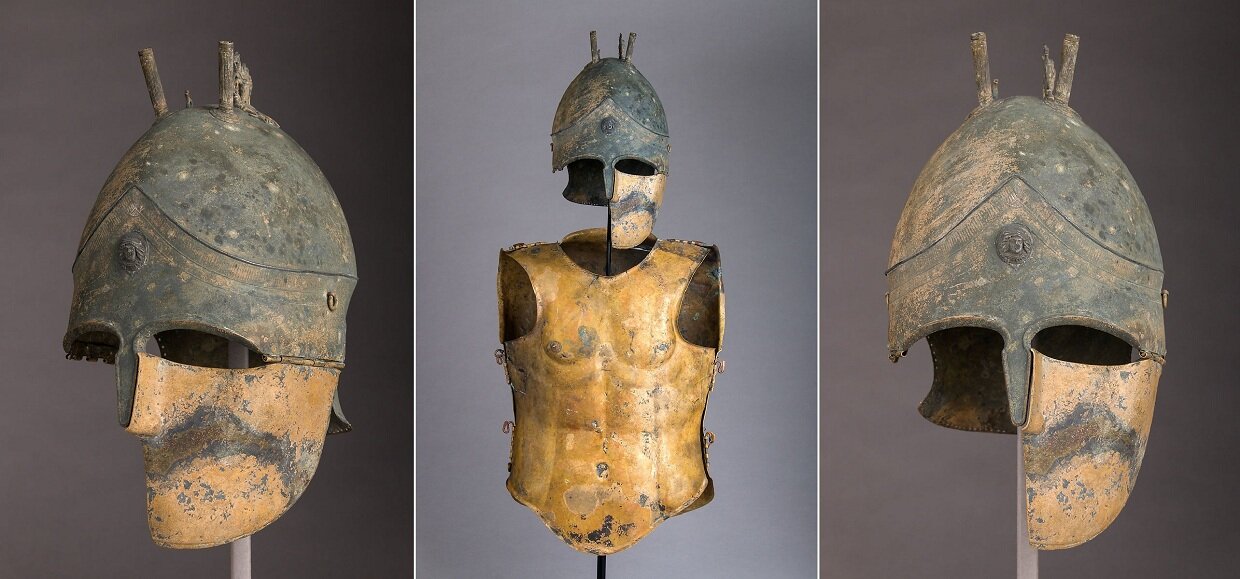

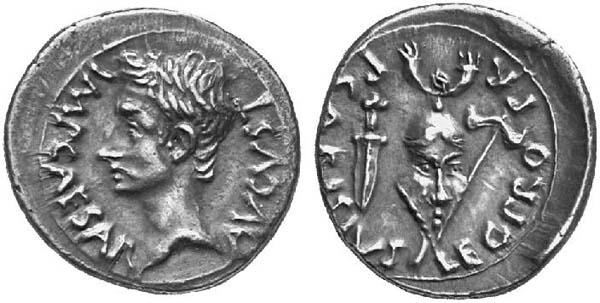
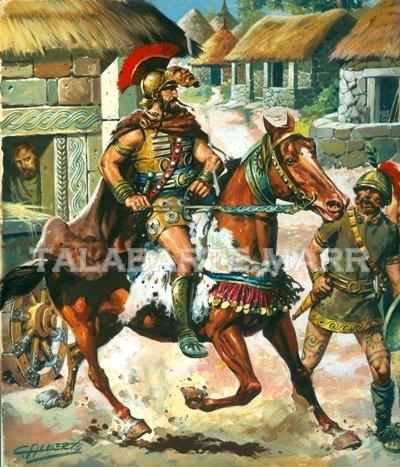
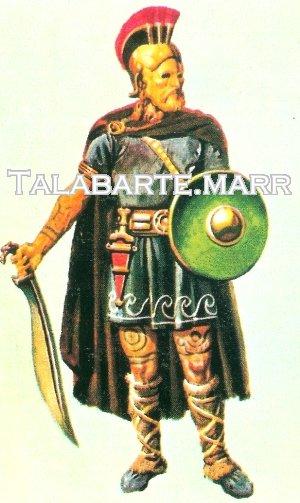
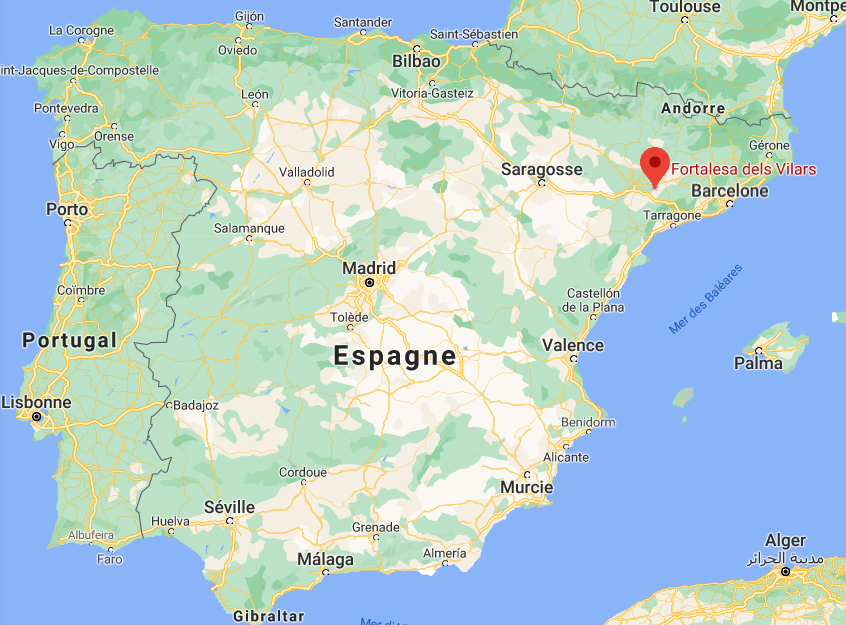
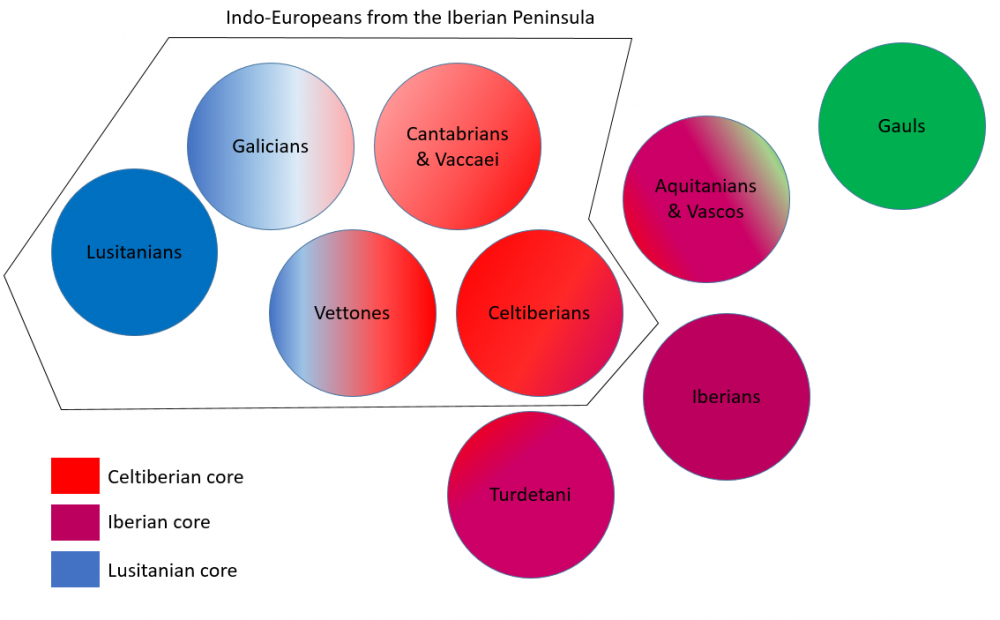
For a New Faction: Lusitanian.
in General Discussion
Posted
Recuperado de: Wikiloc | Ruta RUTA COSTERA: parque arqueológico campa torres-faro campa torres-parque campa torres
Esta es una reconstrucción de una "choza" propia de los pueblos castreños (en este caso de los astures, pero como ya he dicho, común a todo el espacio castreño; así que podría encajar perfectamente en la facción). Se encuentra en el parque arqueológico de la Campa Torres (que no es otra cosa más que la musealización de ese yacimiento arqueológico): Parque Arqueológico-Natural de la Campa Torres | Web de Gijón (gijon.es).
Lo más interesante de esta reconstrucción es el tejado. Destacan especialmente los listones de madera (se cuelgan de la viga central interior), usados para sujetar la cubierta vegetal del mismo e impedir que este se desmorone por las inclemencias climáticas (viento..etc.).
Estas técnicas están documentadas en los llamados "teitos", construcciones que hasta el siglo pasado seguían usándose en zonas de montaña de todo el noroeste de la Península Ibérica especialmente (sobre todo en las actuales Galicia, Asturias y Cantabria).
Este artículo sobre las "brañas" (término local agrícola y ganadero al que los teitos están estrechamente unidos), ilustra más del tema: 10358-38243-1-SM.pdf (upv.es)